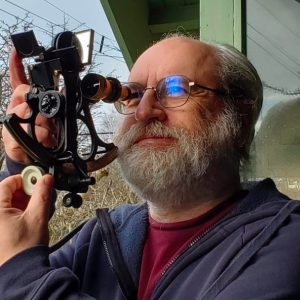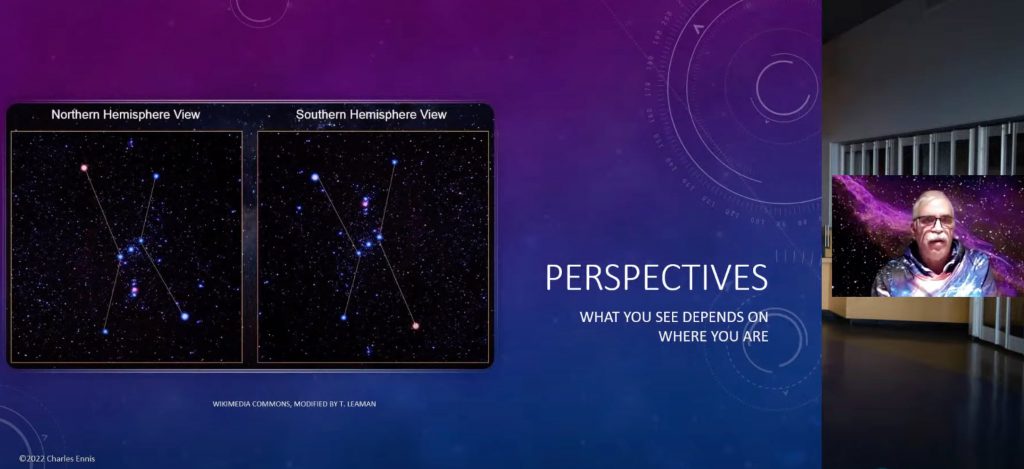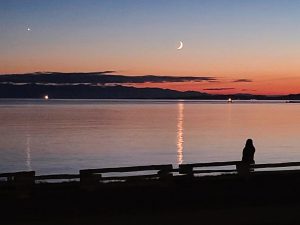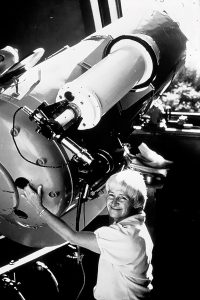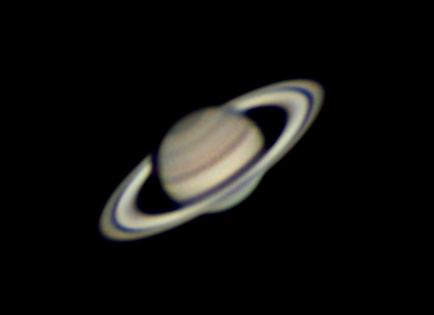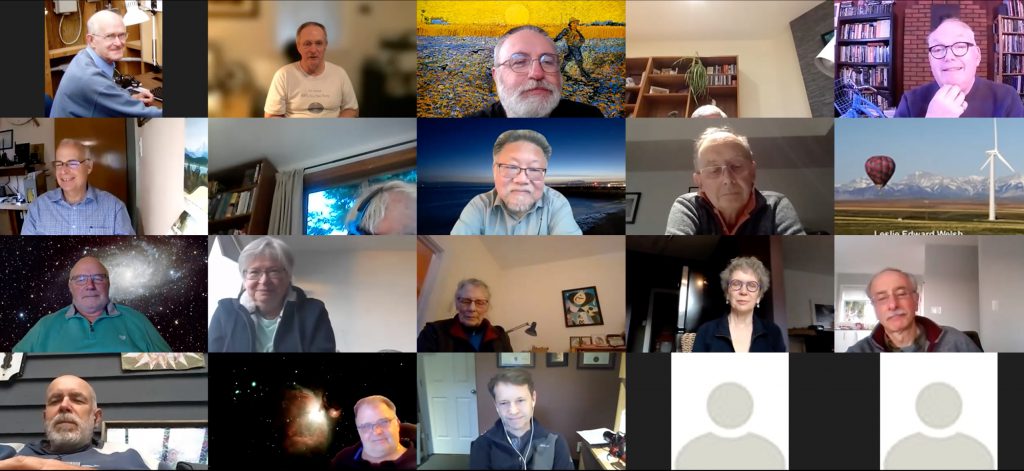Transcript video of meeting
- IAU Small Bodies Nomenclature – Chris Purse
- Asteroid (10109) Sidhu – 1992 KQ – discovered by Eleanor F. Helin
- Sid Sidhu was nominated by President Chris Purse back in 2018
- Quite a few Victoria Centre members are already honoured, along with other RASC members
- Sid joined RASC in 1985
- The Transformative Journey of HD 93521 (Doug Gies, et. al) – Randy Enkin
- Rapid rotating star between Leo Minor and Ursa Major
- Blue star 40,000 times more luminous as the Sun, Spectral Type O
- Only 5 million years old, and burning out rapidly
- First spectra was published by Plaskett & Pearce in 1931
- Actually 39 million years old, but nuclear clock was reset 5 million years ago
- Discussion about black holes, stellar dust, and star formation and evolution
- Lunar Occultation – David Lee (david@victoria.rasc.ca)
- Zubelnelgenubi double star occulted by the Moon on Feb 22, 2022
- Published times for various locations
- Altitude of 20º and Azimuth 135-180º from Victoria
- Prepare ahead of time
- David can help anyone interested in observing or photographing this event
- Update on Victoria Centre Observatory – Reg Dunkley
- 20″ Obsession Dob telescope – visual observing
- Digital setting circles to be installed
- 12″ Dob telescope – visual observing
- Takahashi TOA – visual and photography configurations
- 12.5″ OGS RC – photography with a new 61 Mpix cooled camera, filters LRGB & narrowband
- First light of the Moon – photo taken last night
- Paramount mount still needs some service, but it’s working
- COVID-19 Regulations – 4 members at the VCO, and 2 more members at the Plaskett parking lot. Active Observers should attest to being fully vaccinated to President Randy Enkin (president@victoria.rasc.ca) and cc to Chris Purse (membership@victoria.rasc.ca)
- Member-In-Charge (MIC) – 2 spaces available for new volunteers. Training will be provided.
- 20″ Obsession Dob telescope – visual observing
- Update on James Webb Space Telescope – Chris Gainor
- Last week, instruments turned on
- First light on sensors
- Calibrating the mirror segments is proceeding
- History of Hubble – Chris Gainor
- Chris will be receiving copies of the book
- Requests can be sent to the Hubble Information Center – info-center@hq.nasa.gov
- Observers Handbook 2022 – free one available from Joe Carr (web@victoria.rasc.ca)
- SIGs – David Lee (david@victoria.rasc.ca)
- Makers SIG meeting online this Thursday
- Victoria Centre’s AGM – Feb 21, 2022 starting at 7:00PM PST
- Speaker: The Life and Times of the Sky Quality Meter – Doug Welch, Dean of Graduate Studies, and on the CFHT and TMT boards
- Need a quorum – proxies are good if you can’t attend – send to any member in good standing who will attend, or Barbara Lane secretary@victoria.rasc.ca
